20+ SAMPLE Contractor Proposal
-
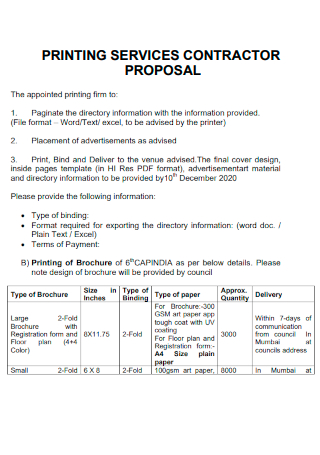
Printing Service Contractor Proposal
download now -
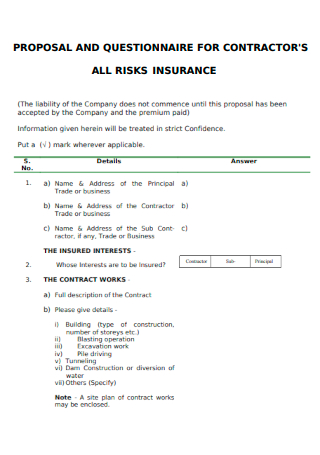
Proposal and Questionnaire for contractors All Risk Insurance
download now -
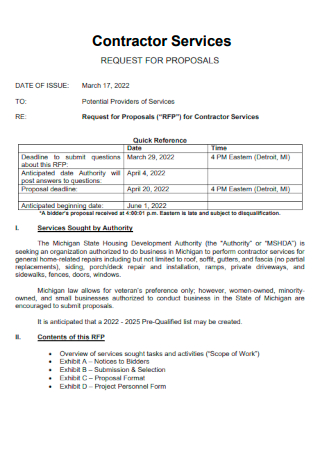
Request for Proposals Contractor Services
download now -
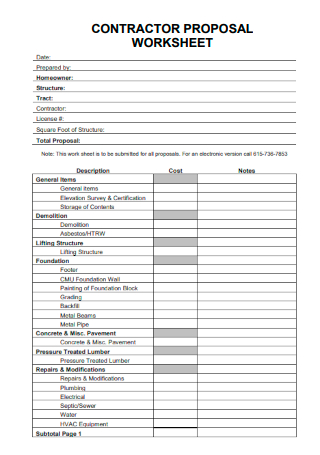
Contractor Proposal Worksheet
download now -
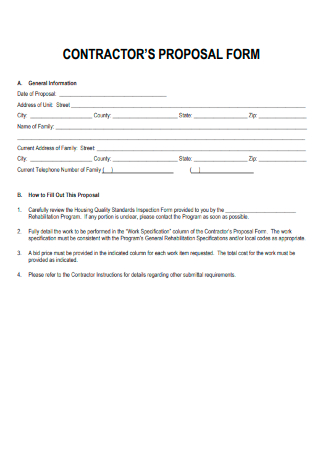
Contractor Proposal Form
download now -
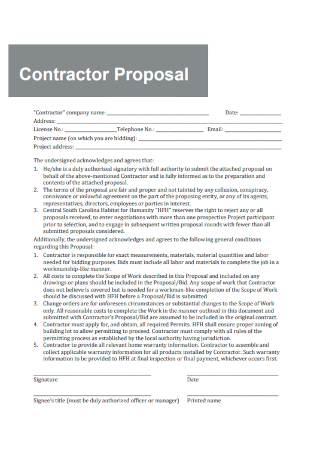
Sample Contractor Proposal
download now -

New Law Protects Contractor Proposal
download now -
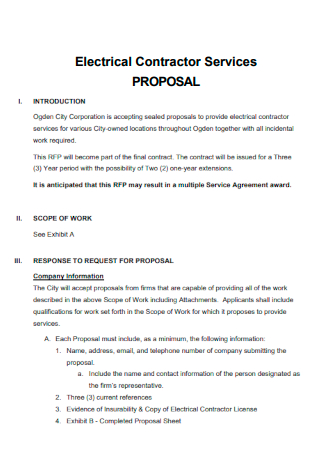
Electrical Contractor Services Proposal
download now -
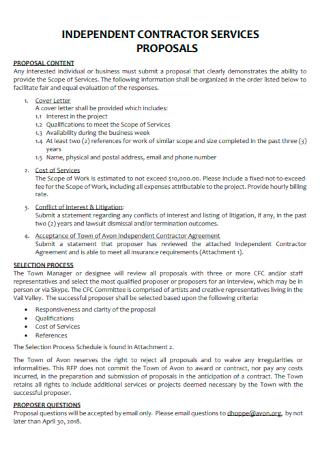
Independent Contractor Services Proposal
download now -

Proposal for Contractor Services
download now -
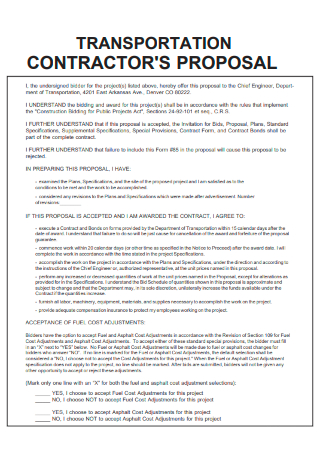
Transportation Contractor Proposal
download now -
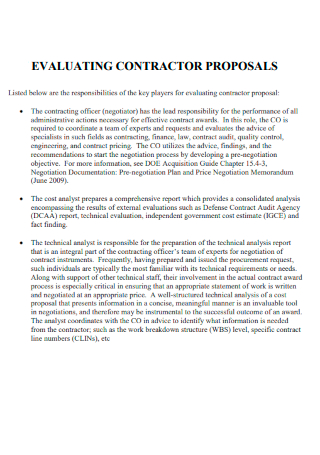
Evaluating Contractor Proposal
download now -
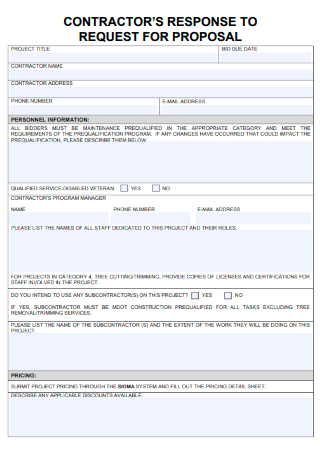
Contractors Response to Request for Proposal
download now -

Contractor Selection Proposal Evaluation
download now -
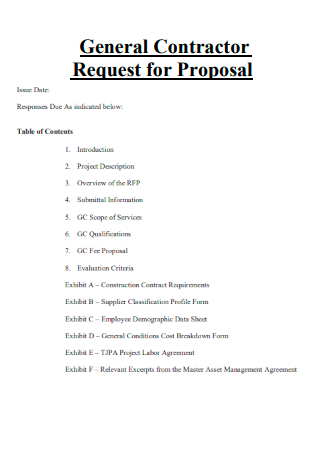
General Contractor Request for Proposal
download now -
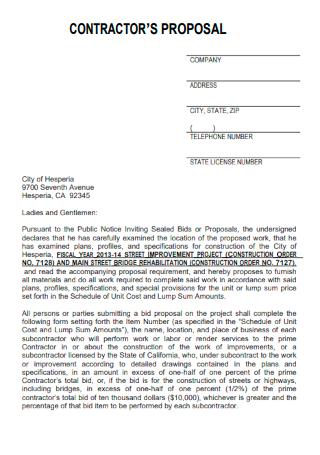
Basic Contractor Proposal
download now -
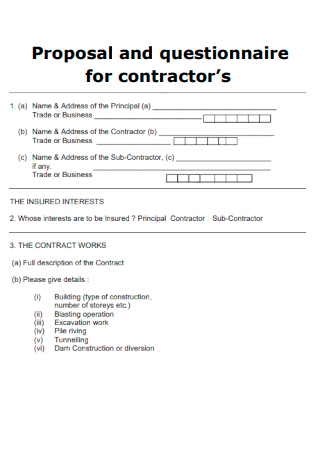
Proposal and Questionnaire for Contractors
download now -
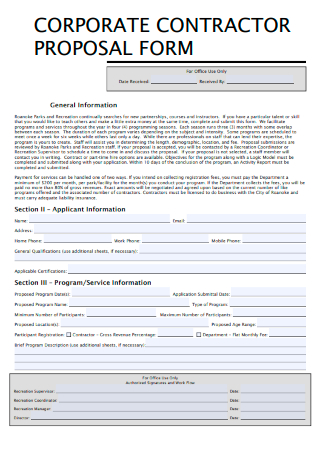
Corporate Contractor Proposal Form
download now -
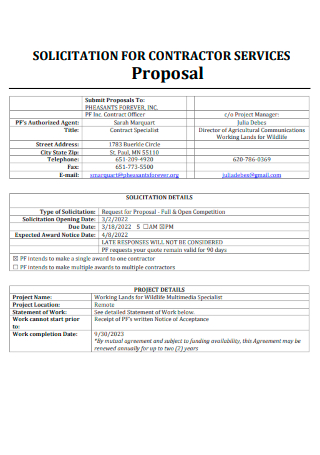
Solicitation Contractor Services Proposal
download now -
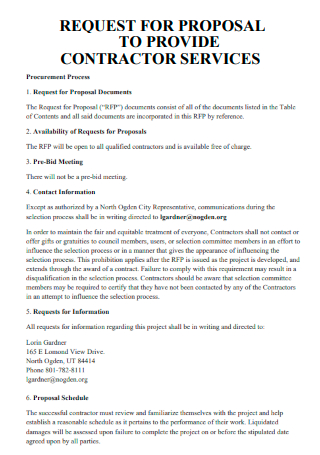
Request for Proposal to Provide Contractor Services
download now -
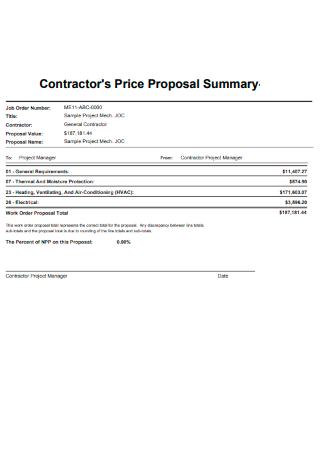
Contractors Price Proposal Summary
download now
FREE Contractor Proposal s to Download
20+ SAMPLE Contractor Proposal
What Is a Contractor Proposal?
Elements of a Contractor Proposal
Steps in Writing a Contractor Proposal
FAQs
What is the difference between a contractor and an employee?
What skills are advantageous to contractors?
What is the importance and purpose of contractor proposal in writing?
What Is a Contractor Proposal?
A contractor agreement is a written agreement between a hiring body and a lender or contractor. Various types of contractors use the document to detail necessary content, including services, clauses, and other terms made between the client. It is a written document that is legally binding, enabling both parties to identify working attachments, accomplish expectations, and prevent misunderstandings. A contractor agreement is essential to the hiring body because they cannot oversee working hours, conditions, and performance. The agreement assures the hiring person that the execution of work is according to the terms and conditions of the agreement signed by both parties. According to the news release of the United States Bureau of Labor and Statistics titled Contingent and Alternative Employment Arrangements dated June 7, 2018, a record shows that 10.6 million independent contractors or 6.9 percent of total employment are present in May 2017. These individuals identify alternative work arrangements and comprise a large portion of the workforce during that time. At present, plenty of people identify themselves as contractors due to the impact of the pandemic on working conditions.
Other templates are available on our website, and you can use them whenever you need them. They are as follows: real estate purchase contract, buyout agreement, work contract, Labor Contract, position agreement, staffing agreement, business lease proposal, work agreement, property purchase agreement, tenancy contract, security bid proposal, and other similar templates are available
Elements of a Contractor Proposal
A clear and concise agreement is a beneficial document between the parties. The meticulous process and mutual understanding between the contractor and client result in a fair negotiation. It is essential to include the following elements in an independent contractor agreement to ensure that all details cover the arrangement.
Steps in Writing a Contractor Proposal
A contractor’s proposal must include all agreed-upon information in sufficient depth. A well-structured contractor agreement establishes the parameters of the transaction and the client-contractor relationship. It leads to less conflicts, misunderstandings, and even legal etiquette.
Step 1: Classify the Relationship between the Parties
It is crucial to meet with the client and determine the type of relationship they desire during the course of the contract. The majority of client-contractor relationships do not reflect an employer-employee dynamic. Ideally, both parties must consent to the agreement before signing it. If both sides cannot achieve an agreement, it is prudent to continue negotiating until they do.
Step 2: Elaborate on the Project’s Scope
As soon as implementation of the agreement commences, the contractor is aware of its extent. At the completion of the contract, the client must compile a list of all the activities and work arrangements completed by the contractor. Additionally, the contractor discloses the restrictions of the given services. Both sides must agree on the desired outputs and services, as well as the completion deadline. The agreement must also include provisions for safety in the event of unforeseen events.
Step 3: Establish Dates
The completion date must be agreed upon by all sides. The contractor must be aware of the conditions of the contract and allocate and exhaust all effort, time, resources, and skills appropriately in order to provide the intended output. A fixed date guarantees that the contractor will prepare all necessary materials before the deadline.
Step 4: Agree on Payment Terms and Schedules
The duration of the agreement corresponds to a payment settlement between the client and the contractor. It comprises both the principal amount owed to the contractor and the number of installments. The parties must also reach an agreement on the cost of construction materials and other fees. If the contractor is responsible for all costs, it must be specified in the contract to avoid misunderstandings. Additionally, it is useful to discuss the instances of subcontractors entering the transaction and their relationship to the payment terms.
Step 5: Include Necessary Clauses to Protect Both Parties
The contract must have safety measures to safeguard both parties against legal issues. The contractor agreement is a legal instrument controlled by applicable laws, based on the parties’ arrangement. Among the clauses are indemnity, termination, waiver, warranties, and intellectual property. The provisions permit the contractor and customer to agree upon mutually beneficial arrangements. It is also crucial to determine the laws that regulate the agreement’s provisions, especially if the parties are located in different states or countries.
FAQs
What is the difference between a contractor and an employee?
By definition, contractors and employees are already different. Contractors operate under an independent business and perform work for multiple clients at a time. A contractor is responsible for submitting invoices related to expenses and provides their tools and equipment. They also manage their taxes. Meanwhile, an employee works for a single employer and is subject to follow work quotas and hours. An employee is also entitled to legal benefits under the W-2 classification. Differences between contractors and employees include relationship differences, area of expertise, control of work, the scope of work, payment patterns, work hours, instructional oversight, filing of taxes, mandated benefits, and partnership classifications. It is necessary to identify if a worker is an independent contractor or a full-time employee. Without proper supervision, misclassification may happen, and it leads to penalties and even lawsuits. It is advisable to seek legal counsel to help navigate complex methods and procedures relating to misclassification. It is better to prevent misclassification rather than to face the consequences afterward.
What skills are advantageous to contractors?
There are key personality traits that contractors, especially independent contractors, must possess to successfully manifest their true potential to be effective contractors. Here are the essential skills and qualities that a successful contractor must hold.
What is the importance and purpose of contractor proposal in writing?
For any kind of interaction, it is critical to have them on a piece of paper. A written agreement saves the parties involved from a lot of misunderstandings, money problems, and negotiations. It protects the interests of the client and the contractor and enforces their rights. The arrangement allows the parties to understand the terms and conditions of the expectations, and most importantly, it holds information on clear and precise agreements. It also sets consequences, processes, and other possible actions if either of the two parties cannot satisfy the duties and obligations present in the negotiation.
Pursuing a profession without the assurance of security is both exhilarating and difficult. Due of ambiguity and difficulty, becoming a contractor is not an easy path to take. However, if you consistently put your best foot forward, numerous possibilities to learn and broaden your horizons will present themselves. Keep in mind that there is no such thing as an easy job because every position requires a unique combination of skills. Each individual must learn to be motivated, receptive, social, patient, adaptable, outgoing, optimistic, and, above all, diligent. No one can compete with a person who has well-defined ambitions. According to Dwayne ‘The Rock’ Johnson, “Success is not always dependent on excellence. It involves constancy. Consistent effort yields success. “Greatness will arrive” Utilize the contractor proposal samples in the aforementioned article to launch your firm on a great note.
